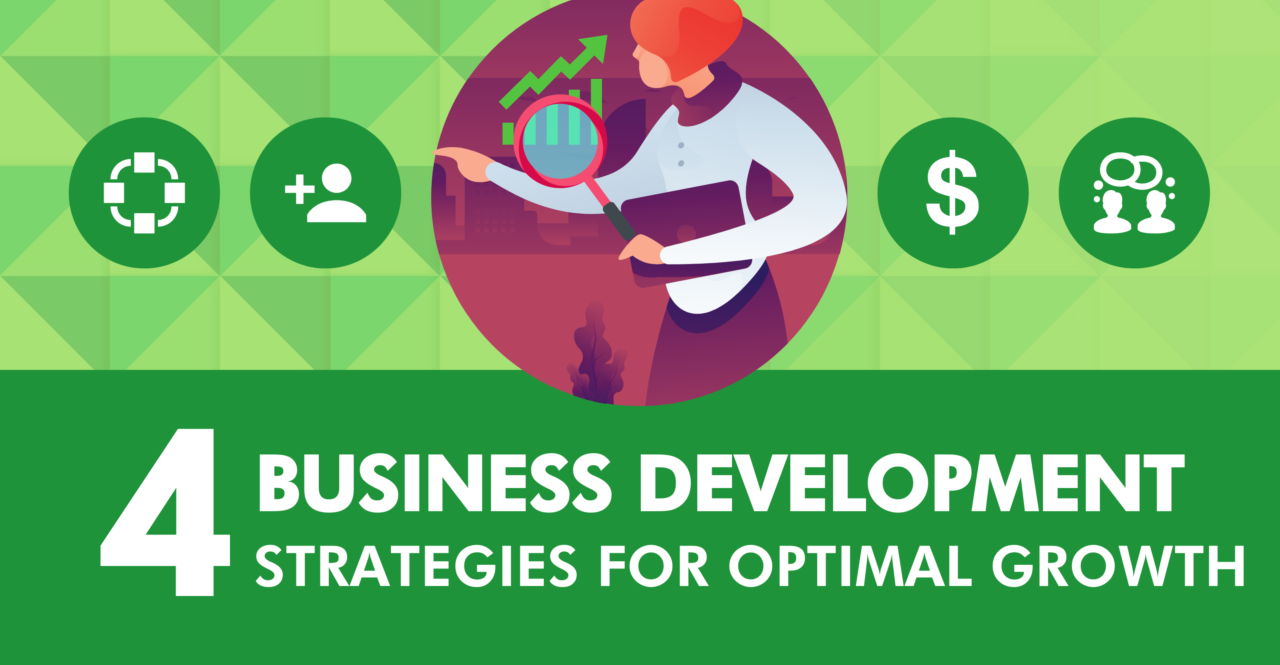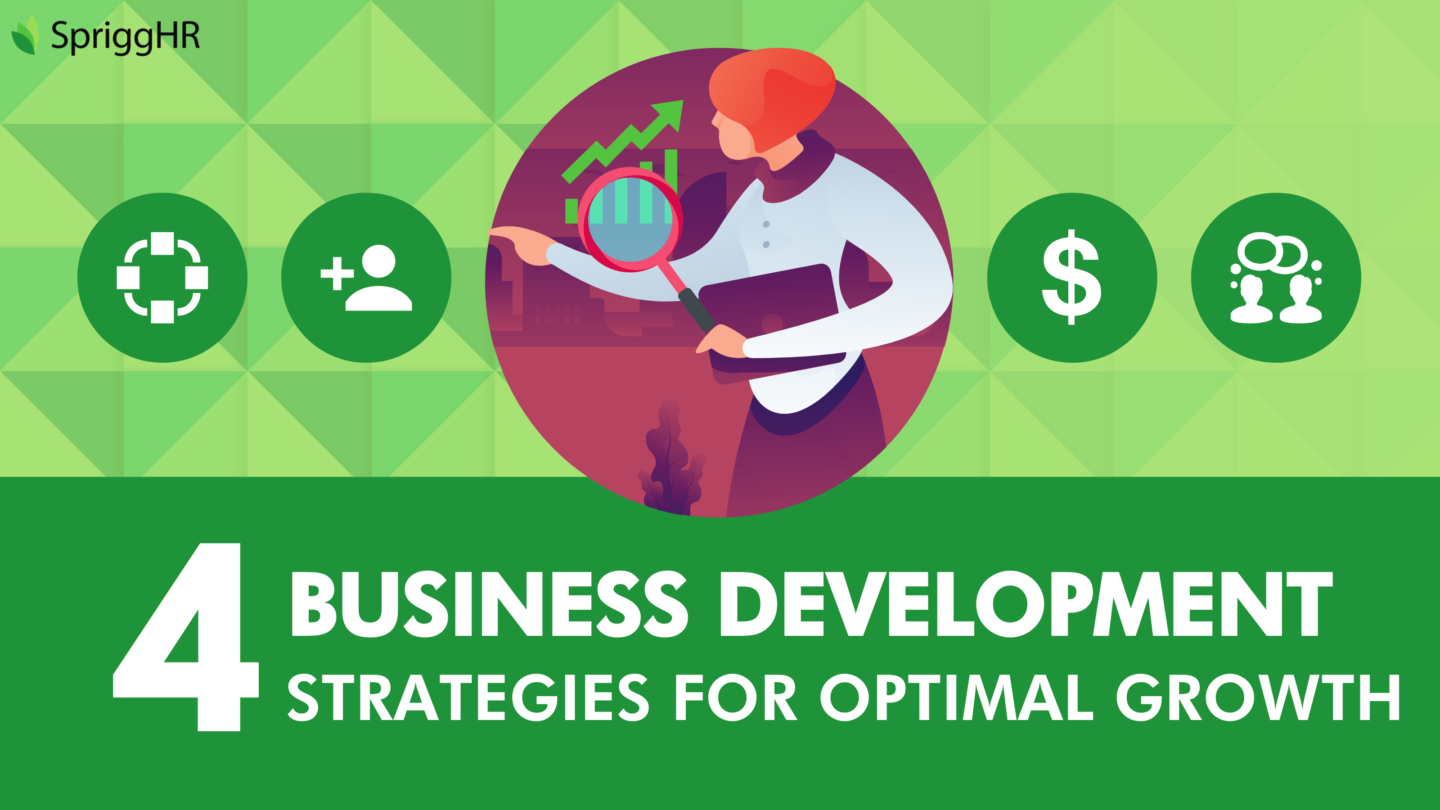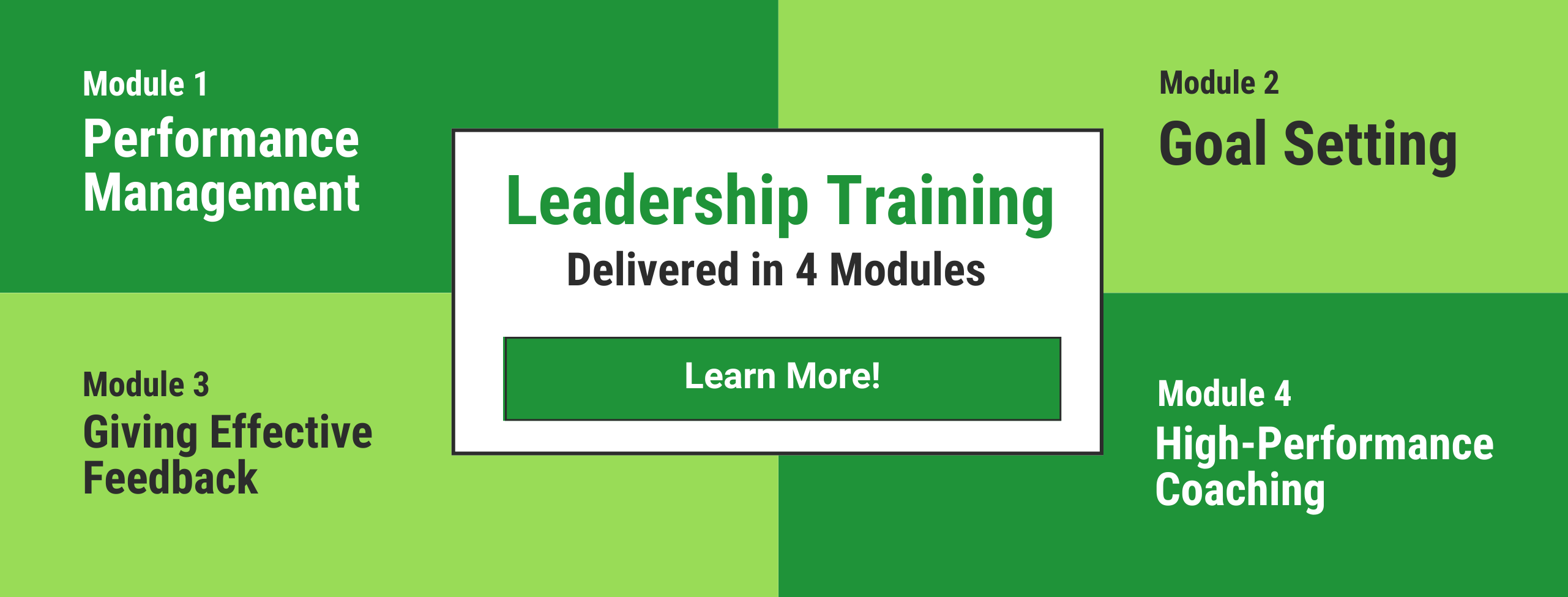
4 Key Business Development Strategies for Optimal Growth
Your company’s business development strategies can be the key to the success or failure of your organization. It is the secret ingredient to transforming your business into one comprised of strong relationships, promising prospects, and increased revenues. Creating a strategy and an associated plan, and leveraging it in the right way, can propel an employee, a team, or an entire company to new levels of growth and profitability.
What is a Business Development Strategy?
Business development is the process used to identify, nurture, and acquire new clients and business opportunities to drive organizational growth and increase profits. Essentially, it is the creation of long-term value for a business from customers, markets, and relationships. The business development strategy is the document that outlines the strategy you will use to accomplish that goal.
The Importance of a Good Business Development Strategy
A strong business development strategy is the framework that instructs your team on how to find and generate high-value leads that will ultimately support the company’s long-term goals. If you do not have a strategy in place, your employees may struggle to identify those qualifying prospects, or even spend valuable time developing relationships with prospects who will never convert.
The scope of what business development looks like is wide, varying from organization to organization. Generally, professional service organizations generate new business by following a three-tier funnel approach. The first two stages are Attracting Prospects and Building Engagement, which are traditionally marketing functions. The third and final stage, Turning Opportunities into Clients, is traditionally a sales function. In this structure, the business development plan would be to seek out new channels of sales and distribution, as well as new marketing partners. This is an example of strategic business development.
Strategic Business Development
Strategic business development aims to align business development processes and procedures with the company’s strategic business goals. The object is to acquire the ideal clients for the organization’s highest priority services, accomplished by using brand promises that you are able to deliver on.
Actually, determining which targets to pursue, and which business development strategies to employ, to generate new business can be a risky decision. When a strategy is strong, suitable for the company’s goals, and is well implemented, it has the potential to drive high levels of growth and profitability for the business. A faulty strategy and implementation, however, can hinder growth and frustrate your top performers and most valuable talent. This is why it is critical to have a thorough understanding of the business development strategies that yield the best results for your company, and how to go about embedding those into your business development plan as a whole.

Creating a Business Development Strategy for Optimal Growth
The Four-Step Process
There are four main stages to go through when creating a firm, reliable business development strategy for your organization.
1. Identify Your Audience
In order to create a business development strategy that yields optimal growth and profit opportunities, you first need to identify your ideal audience. Focus on specific firms, industry fields, or individuals that are sure to propel your business forward. Aim for quality over quantity – a large audience is not always necessary, but a high-performing one always is.
Keep in mind that successful business development does not happen overnight. Strong relationships may take months, or even years, to turn into a sale. Similarly, unsuitable prospects will not reveal themselves to be so after your first encounter. This is why it’s important to nail down the exact target audience, so you don’t waste valuable time fostering a relationship with an unqualified prospect who will never close the deal.
2. Perform Market Research
Once your audience has been identified, you now need to learn as much as you can about them. Before you can begin encouraging them to work with you, you should be able to answer the following questions about them:
- What are their primary issues?
- What services do they need?
- What is their approach to problem-solving currently?
- How can your product or service improve their current situation?
Once you have a response to these questions, then you can begin to analyze your competition. Identify what sets you out from your competitors, leveraging that difference as your competitive advantage that you can then when communicating your value to prospects.
3. Determine the Appropriate Channels
Once you have identified your target audience, learned everything there is to know about them, and established a plan of action to set you apart from your competitors, you can begin to outline the channels you will use to achieve your target. This involves assessing your total revenue goals for the year and outlining the specific methods you will use to reach those goals. These channels are covered in the top business development strategies and tactics you can use to generate new business, which we will discuss later.
4. Define S.M.A.R.T. Goals
For each channel you have, set S.M.A.R.T (specific, measurable, attainable, relevant, time-related) goals that will help you to measure and track your progress. Your overall business development goal does not necessarily have to be directly tied to generating profit and revenue, but there should be a component that aims at introducing new prospects to your company’s sales funnel.
Sprigg makes it easy to set effective SMART Goals that set you up for success!
The Top Business Development Strategies to Use Today
As discussed, the business development strategies used by your company can also be described as channels through which you work to achieve your total revenue and business targets. The most common business development strategies are a combination of networking, referrals, advertising, and content marketing. It is through the strategic use and leveraging of these outreach tactics that companies nurture successful business relationships and partnerships.
1. Networking
As the most universally used business strategy, networking is built on the theory that professional services buying decisions are rooted in trusted relationships, and the key to best developing new relationships is through face-to-face networking.
While many business relationships continue to develop that way, and the benefits of direct networking with your target audience remain valuable, networking can be an outdated practice in today’s market if utilized incorrectly. Modern buyers and prospects are time pressured, more so than they used to be, and face-to-face networking is a time-consuming process. It can also be expensive, if travel and time away from the office become habitual.
Companies can use new digital networking techniques to help cover the cost and time, reducing networking to a digital outreach strategy rather than a regular in-person meeting, but even social media requires an investment of valuable time and attention that can be lost if misused.
2. Referrals
Closely related to networking are referrals, which are often regarded as the mechanism that turns networking and client satisfaction into new business. A positive relationship with a satisfied customer can open the door to a whole new network of prospects, but reliance upon client referrals to drum up new business is risky if it is your only approach to growing as a company.
Referrals are useful, but they are also passive. They rely on your clients to identify the good prospects of your services, rather than you outlining a strategic advertisement plan, and also requires that they make referrals at the right time. While successful referrals happen all the time, referral sources often do not know the full range of how your products and services can help a potential client, meaning their success rate is much lower than if you were to do the outreach yourself.
Luckily, there are several new digital strategies that can accelerate the rate of positive and well-matched referrals. A critical point of this is boosting the visibility of your specific expertise. Your existing clients will have a better understanding of what it is you offer, leading to better referrals and an increase in a referral base larger than a few clients and business contacts.
3. Sponsorships and Advertising
Paid advertising and sponsored partnerships are a solid business development tactic. In today’s age when traditional advertising methods are losing their long-standing success rate, turning to well-targeted digital advertising is critical. The key to digital advertising is to find your target audience on their preferred platform and start your growth there. If your audience are avid YouTube users, create strong, targeted video ads and run them on there. If they have high engagement rates with your brand on Twitter, invest in advertisement there. Appropriately directed advertisements allow companies to get their messages and offers in front of the right people, without the excessive costs of general, sweeping ads on various platforms.
4. Thought Leadership and Content Marketing
The business development strategy of thought leadership and content marketing has one primary goal: make your expertise visible to potential clients and referral sources. We have already discussed the importance of refining your referral process to ensure the right expertise is being advertised among your referral pool, but that can only be achieved when your specific expertise is completely apparent.
This strategy can be accomplished through writing, speaking, or publishing content that demonstrates your expertise, and also how it can be applied to solve client problems. Long staples of professional business development strategies include books, articles, and speaking engagements, meaning many high visibility experts have built up their practices and businesses upon this strategy specifically.
Like all other approaches, changing times and technologies have reshaped the way this strategy can be leveraged to its highest potential. With digital communication the new norm, establishing your expertise to your target market is much easier and quicker than it used to be. Search engines have levelled the playing field, so that even relatively unknown individuals and businesses can become known to potential prospects outside their physical region. Webinars are commonplace, a democratized version that dominates the space public speaking used to take up, and blogs and websites give every business a firm 24/7 presence on the market.
In Summary
It is far more common than not for companies to combine different business development strategies to best suit their business and to reach their identified targets. However, it is essential that any approach to business development be carefully curated to eliminate the losses that come from misguided attempts to acquire new clients and business opportunities. Good intentions, no matter how ambitious, are of little real business development value. It is far more effective to implement a simple strategic plan than to dabble in several complex ones in hopes of positive results. Fewer elements, when competently implemented, always produce better results.
Ultimately, your business development strategy is the key to the success or failure of your company. It should be a primary goal to develop a strategy, and an associated plan of action, that will propel you and your company to new levels of growth and profitability.





